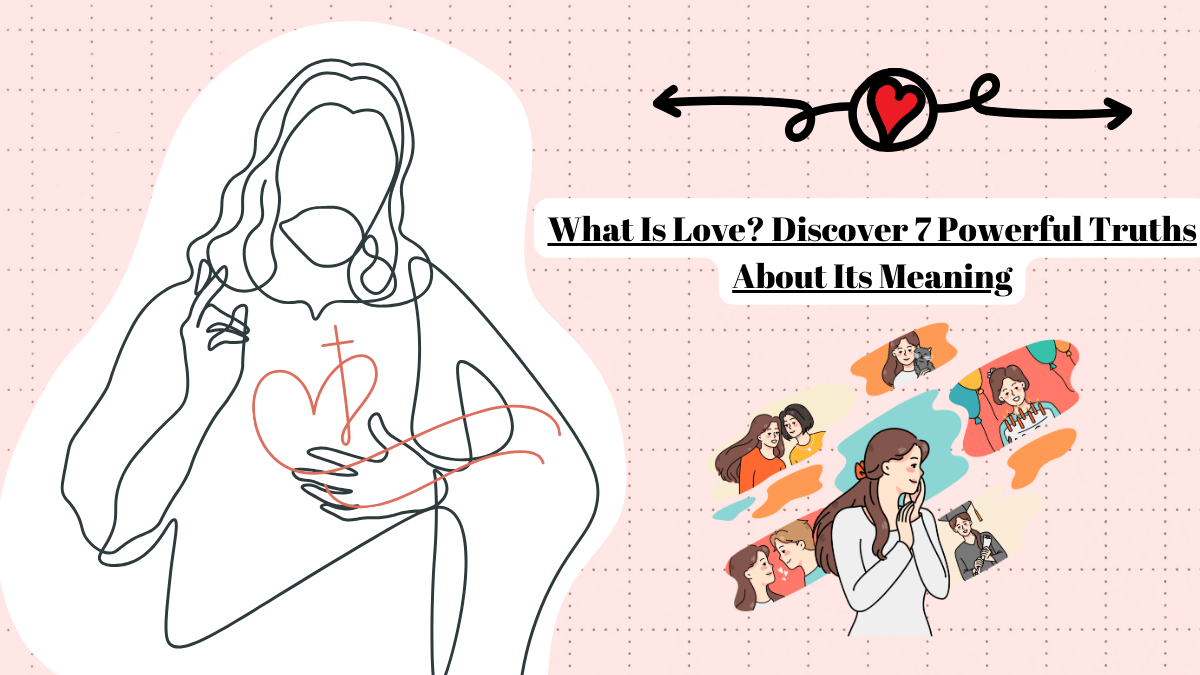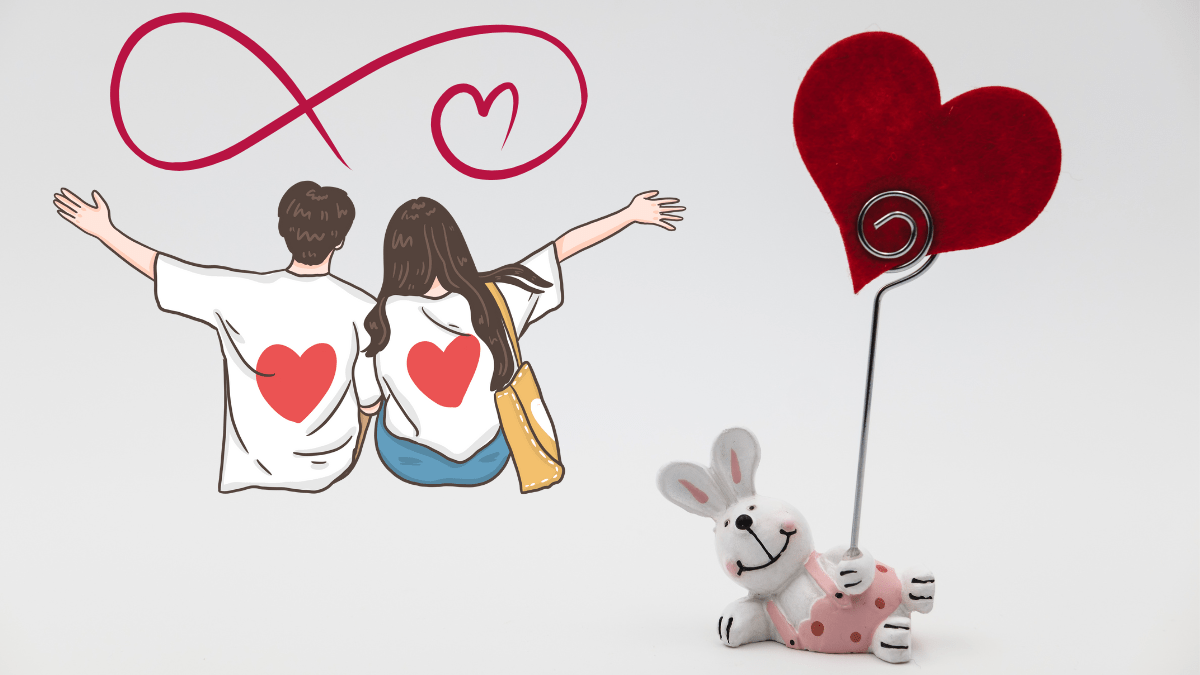
Introduction
What is love?—an emotion that has inspired poets, philosophers, and artists for centuries—is as complex as it is powerful. But what exactly is love? Is it a feeling, a chemical reaction, or a profound connection between souls? In this blog, we’ll explore the essence of love, delve into the science behind love, and look at how love is viewed through philosophical and cultural lenses. Whether you’re in the midst of a whirlwind romance or pondering the meaning of love, this guide will offer insights that resonate with every heart.
Contents
The Essence of Love
Love is often described as a deep affection or intense feeling of care toward someone or something. It’s not just confined to romantic relationships; love can manifest in various forms—love for family, friends, pets, nature, or even an idea. What makes love so unique is its ability to transcend boundaries, cultures, and time. At its core, love is about connection, understanding, and a desire for well-being, whether for oneself or others.
The Science Behind Love
The Biological Basis of Love
What is love if not a profound connection deeply rooted in our biology? Scientists believe that love evolved as a survival mechanism to help humans bond, reproduce, and raise offspring. The feelings we associate with love are closely linked to our brain chemistry and hormonal activity.
Hormones: The Chemical Messengers of Love
- Oxytocin: Known as the “love hormone,” oxytocin plays a crucial role in bonding. It’s released during intimate moments like hugging, kissing, and sex, fostering a deep emotional connection. Oxytocin also promotes feelings of trust and empathy, making it easier to form close relationships.
- Vasopressin: This hormone is associated with long-term commitment and monogamous behaviors. It plays a key role in sustaining long-term relationships, promoting partner loyalty and bonding.
The Role of Attraction and Pheromones
Attraction often serves as the first spark in the journey toward love. Pheromones—chemical signals released by the body—play a subtle role in attraction. These signals can influence how we perceive potential partners, often on a subconscious level. When attracted to someone, our brain releases dopamine, the “feel-good” neurotransmitter, leading to the euphoria often experienced in the early stages of love.
The Philosophical View on Love

Philosophers have long pondered the nature of love, offering various interpretations that reflect its complexity. From ancient Greek philosophers to modern thinkers, love has been explored as a fundamental aspect of human existence.
Historical Perspectives on Love
In ancient Greece, love was categorized into different forms:
- Eros: Representing passion and desire, Eros is often associated with romantic love and physical attraction.
- Agape: This form of love is unconditional and selfless, often linked with religious or altruistic love.
- Philia: Philia refers to the love between friends or deep bonds shared with family, based on mutual respect and shared values.
- Storge: Storge is natural, familial love, such as that between parents and children, which develops over time.
Modern Philosophical Interpretations
Modern philosophers like Jean-Paul Sartre have explored love as a conscious choice, emphasizing freedom in relationships. Sartre argued that true love should allow both individuals to grow and express their true selves, rather than being possessive or restrictive.
Love in Culture and Society
What is love in a cultural context? Love is a universal theme that transcends cultures, yet it is expressed differently across societies. The portrayal of love in literature, art, and media reflects these cultural variations, influencing how people experience and express love.
Love in Literature, Movies, and Art
From Shakespeare’s “Romeo and Juliet” to contemporary romance novels, love has been a central theme in literature. Classic tales often depict love as a powerful force capable of both joy and tragedy, while modern works explore the complexities of relationships.
In movies and television, love is often idealized, with romantic comedies portraying a “happily ever after” scenario. However, recent films and shows offer a more nuanced view, acknowledging the challenges and realities of relationships.
Art has also captured the essence of love in various forms, from Renaissance paintings of lovers to abstract modern interpretations. Visual representations allow for a different expression, evoking deep emotions and connecting with the viewer on a visceral level.
Cultural Differences in the Expression of Love
Different cultures have unique ways of expressing love. In Western cultures, romantic love is often seen as the foundation of marriage, with individuals seeking partners who fulfill emotional and physical needs. In contrast, some Eastern cultures view marriage more as a social contract, with love developing through mutual respect and shared responsibilities over time.
Social media has further influenced modern love, changing how people meet, communicate, and maintain relationships. While it has made connections easier, it has also introduced challenges like the pressure to present an idealized self.
Challenges and Misconceptions About Love
Despite its importance, love is often misunderstood, leading to unrealistic expectations and challenges in relationships.
Common Myths About Love
One pervasive myth is “love at first sight,” which suggests that true love happens instantly. While initial attraction can be strong, true love typically develops over time as people build trust and connection. Another common myth is the concept of “soulmates,” which can lead to disappointment when reality doesn’t match the ideal.
The Impact of Unrealistic Expectations
Unrealistic expectations can strain relationships. The belief that love should be effortless can lead to frustration when challenges arise. Recognizing that all relationships require effort, communication, and compromise can help manage expectations and foster a more realistic view of love.
The Balance Between Love and Independence
Maintaining individuality in a relationship is crucial. A healthy relationship allows both partners to grow while supporting each other. Striking a balance between connection and independence can lead to a more stable and enduring relationship.
Toxic Relationships: When Love Becomes Harmful
Not all love is healthy. Toxic relationships, where love becomes controlling or manipulative, can cause significant harm. Recognizing the signs of a toxic relationship is crucial for protecting one’s well-being. Love should never come at the cost of safety or mental health.
Love as a Force for Good
What is love if not one of the most powerful and positive forces in the world? Love remains a force that can heal, inspire, and bring people together.
Love and Mental Health
Supportive, loving relationships can reduce stress, enhance mood, and provide a sense of belonging. Conversely, a lack of love and social connections can lead to loneliness, depression, and anxiety. Prioritizing love and positive relationships is essential for mental well-being.
Love and Social Change
Love can also be a catalyst for social change. Movements driven by love and compassion, such as civil rights or environmental activism, have the power to create positive change. When extended beyond personal relationships, love can inspire actions that promote justice, equality, and peace.
The Power of Self-Love
Self-love is a vital component of love. It involves accepting oneself, recognizing one’s worth, and taking care of one’s needs. Self-love is not selfishness but treating oneself with the same kindness and respect that one would offer to others. Cultivating self-love can lead to healthier relationships and a more fulfilling life.
Conclusion
What is love? In all its forms, love is a fundamental aspect of human existence. Whether viewed through the lens of biology, philosophy, or culture, love shapes our lives in profound ways. By understanding its nature and challenges, we can create deeper, more meaningful connections with others and ourselves. Ultimately, love has the power to enrich our lives, promote well-being, and bring about positive change in the world.
